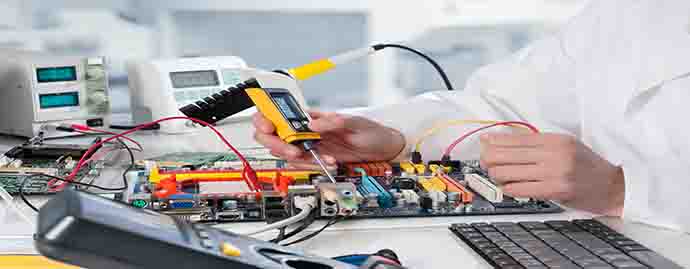| تاريخ البداية | تاريخ النهاية | الدولة | المدينة |
|---|

 +۹٦٦ ۹۲۰۰۰۷۷۷۱
+۹٦٦ ۹۲۰۰۰۷۷۷۱

الأهداف
At the end of the course participants will able:
- Identify the hazards in O&M work in different parts of electrical installations
- Identify the various statutory and legal regulations and acts dealing with electrical safety at work
- Appreciate the basic theoretical aspects involved in electrical safety
- Understand the importance of proper design of electrical equipment in ensuring safety
- Gain a clear understanding of the procedures and practices adopted for safe working
- Appreciate the role of regular inspection and condition-based maintenance in ensuring safe operation
- Gain an insight into the organisational aspects of safety
- Become familiar with the electrical safety rules (applicable to on-site training)
الخطوط العريضة
Day 1:
BASIC THEORY OF ELECTRICAL SAFETY
- Electrical shock - why does it happen?
- Touch and step potential (voltage)
- Direct and indirect contact
- Role of electrical insulation in safety
- Avoiding electric shock – different approaches
- Earth leakage circuit breakers
- Earthing of power supply systems and its safety implications
- Role of earthing of equipment enclosures (protective earthing) in human safety
- Earthing in outdoor installations
- Earthing of buildings and structures for safety during a lightning strike
- Dangers due to arc flash in electrical equipment
Day 2:
REGULATORY ASPECTS OF ELECTRICAL SAFETY
- Tracing the evolution of factory regulations
- Acts and regulations dealing with electrical safety
- Health and safety regulations (general)
- Electricity related regulations
- For electricity suppliers
- For electricity consumers
- Wiring rules as applicable for LV/HV installations
- Safety aspects of electrical equipment for use in hazardous areas
SAFETY ASPECTS IN ELECTRICAL EQUIPMENT DESIGN
- Objectives of safe design
- Insulation and its role in safety
- Enclosures for safety
- IP classification
- Adverse thermal effects and prevention
- Isolation and blocking of switching to prevent hazards
- Role of standards in safety
Day 3:
SAFE OPERATION AND MAINTENANCE OF ELECTRICAL EQUIPMENT
- Key safety issues in O&M of electrical installations
- Isolation and earthing of equipment
- Use of warning signs for operation and maintenance
- Safety while working in outdoor switchyards and overhead lines
- Work on underground cable systems
- Use and upkeep of safety appliances in substations and other electrical premises
- Gas safety and ventilation
- First-aid for burns and electric shock
Day 4:
INSPECTION OF ELECTRICAL SYSTEMS FOR SAFETY
- Objectives of inspection
- Stipulations regulations
- Inspection of new installations
- Checklists of items/aspects to be inspected
- Periodic inspection
- Documentation of inspection
- Planned and condition-based preventive maintenance
Day 5:
SAFETY IN BATTERY INSTALLATIONS
- Hazards involved in lead-acid battery installations
- Premises used for housing lead acid batteries
- Transportation and storage
- Installation and commissioning
- Charging and storage
- Dismantling and disposal
- Protective clothing
- First-aid measures
ORGANISATIONAL ASPECTS OF SAFETY
- Legislative aspects of safety
- Role of an organization in
- ensuring/improving work safety
- Functional requirements
- Intra-organizational safety implementation
- External interfacing and compliance
من ينبغى أن يحضر
- Consulting Engineers & Technicians
- Electrical Engineers & Technicians
- Project Engineers
- Maintenance Engineers
- Power System Protection and Control Engineers
- Building Service Designers
- Data Systems Planners and Managers
- Electrical and Instrumentation Technicians
- Master Electricians
المدة
5 أيام










